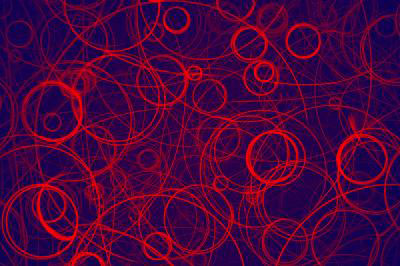| Nov 15, 2011 |
Perfect micro rings woven from muscle fibers
|
|
(Nanowerk News) Supplied with sufficient energy, a freight train would ride the rails as far as they go. But nature also knows systems whose dynamics suddenly turn into a kind of endless loop. Like in a hamster wheel, a train caught up in such a system would continue running, but without moving forward. Scientists from the Cluster of Excellence Nanosystems Initiative Munich have now succeeded in building a simple model system consisting of only three components to study the laws of such so-called absorbing states ("Frozen steady states in active systems").
|
|
Scientists speak of an active system when a system continuously consumes energy. Active systems are all around us, anything from simple machines to highly developed creatures. However, our knowledge and understanding of these systems are still very limited. We often find complex phenomena where we would actually have expected simple patterns.
|
 |
| Scientists at Technische Universitaet Muenchen and Ludwig-Maximilians-Universitaet Muenchen created a simple model system to investigate the fundamental principles of so-called absorbing states. The system consists of merely three components: the muscle protein actin, motor proteins responsible for transport and movement in cells and fascin molecules that cross-link the actin fibers.
|
|
This is exactly is what happened to a team of physicists headed by the Nano Initiative Munich (NIM) scientist Andreas Bausch, biophysics professor at the Technische Universitaet Muenchen (TUM) and Professor Erwin Frey, biophysicist at the Ludwig Maximilian University Munich (LMU). They investigated how fibers made of the muscle protein actin behave when they are transported and cross-linked at the same time. The physicists discovered that at a certain point the system suddenly entered a so-called absorbing state, albeit without ceasing to consume energy.
|
|
Scientists refer to a state that a system that cannot escape from as an absorbing state. The model system used by the researchers comprises merely three components: the muscle protein actin, motor proteins responsible for transport and movement in cells and fascin molecules that cross-link the actin fibers. Using this simple and easily controllable model allows the scientists to investigate the fundamental principles of absorbing states.
|
|
In the experiment, millions of biological motor proteins anchored on a glass surface are responsible for transporting the actin fibers. They are the active components in the model system. After adding adenosine triphosphate (ATP), the "fuel" for the motor proteins, the fibers begin to move randomly. Next the researchers added cross-linking molecules to connect the fibers. This leads to the formation of ever-larger structures that move around on the substrate. Ultimately, all fibers are incorporated into large structures. However, these structures are no longer able to move freely across the surface. They are now fixed in place and run in circles – the system is trapped in an absorbing state.
|
|
Surprisingly, the structures that develop are quite complex. The result is a collection of perfectly shaped rings made up of millions of individual fibers that rotate permanently under the influence of the motor proteins. "The amazing thing is not only the complexity of the structures themselves, but the fact that even such a simple system comprising only three components – fibers, motor proteins and cross-linking molecules – can run into an absorbing state," says Volker Schaller from the Institute of Cellular Biophysics at TUM, lead author of the work.
|
|
"Such a minimal system should allow us to understand the experimental results using theoretical models," adds Christopher Weber from the Department of Statistical and Biological Physics of LMU Munich. He collaborates with Professor Frey on theoretical concepts to describe active systems. Through their cooperation they successfully uncovered the underlying principles of the ring formation. Specifically, they were able to attribute the rings' properties, such as size and shape, to random movements on a molecular level.
|
|
"The mesmerizing thing about the model system, aside from the fascination evoked by the almost perfect patterns, is a seeming contradiction," says the biophysicist Andreas Bausch. An active system is able to enter an absorbing state, although it continues to consume energy. "For the system, an absorbing state is like a dead-end street: once part of the system walks into the dead-end, there is no more escape," says Bausch. Such absorbing states can be found in countless active systems, including far more complex ones, e.g. those found the growth of competing cell populations.
|
|
A central question is whether the dynamics of all these systems adhere to the same fundamental laws. According to Frey, this is one of the big open questions in the physics of complex systems. "A model systems comprising only a few elements is ideally suited to answer this kind of question," the Munich physicist emphasizes.
|

